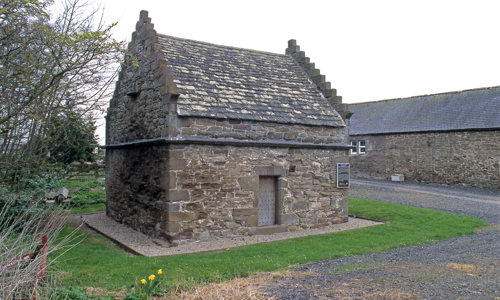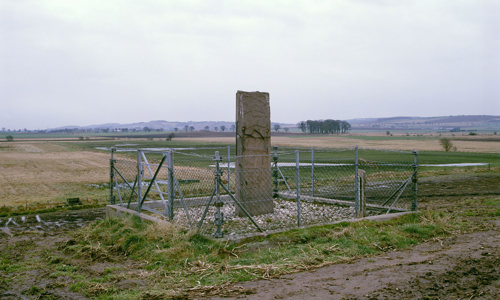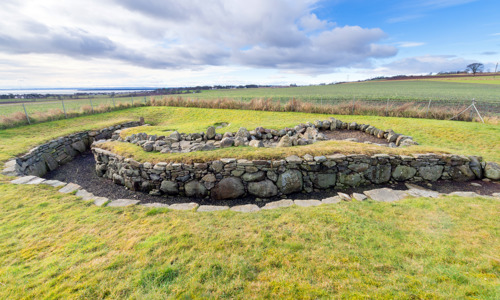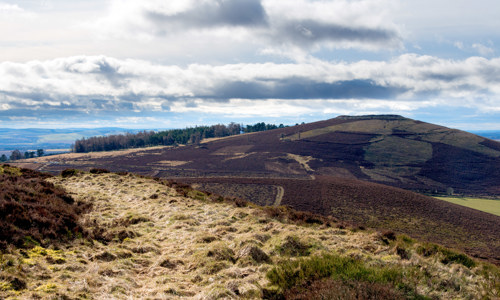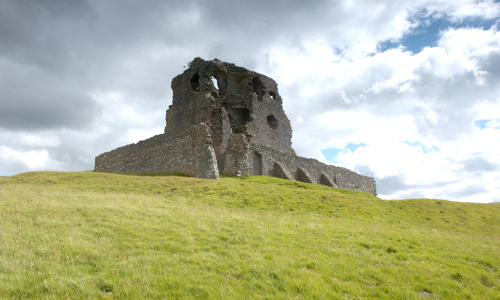History
Tealing Earth House dates to the first few centuries AD, and was discovered during ploughing in 1871. It has a layout typical of an Angus souterrain, with a long, banana-shaped passage some 25m long, 2.5m wide and 2m tall.
An excavation conducted by Angus antiquarian Andrew Jervise in 1874 revealed the earth house was divided into a series of compartments, and roofed with massive flat slabs. A small room at the end of the chamber was formed by a pair of upright slabs.
Jervise also found two cup-and-ring marked stones within the souterrain’s corbelled walls.
A Roman connection
Souterrains are found across Scotland’s eastern seaboard. All sorts of suggestions have been advanced as to what they were used for.
Their dating, in the first and second centuries AD, suggests they could have been built to store grain and meat during the occupation by the Roman army. Finds in Tealing Earth House lend some credence to this idea.
Jervise’s 1874 excavations found:
- animal bones
- sherds of native pottery
- 10 broken quern stones, tools used for hand-grinding
- high-quality Roman glass and pottery
Most souterrains were filled in deliberately in about AD 200, as if they were no longer needed.


